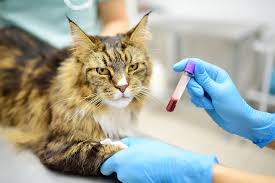Living in a rural setting comes with its own set of challenges, especially when it comes to accessing veterinary care. You might feel isolated and far from essential services, which can be stressful when your pet needs help. The good news is that telemedicine is changing how veterinary care works in these areas. Imagine having the Sumter veterinarian you trust available right from the comfort of your home. Telemedicine offers the chance to consult with veterinarians without the need for long travel. This technology bridges the gap, ensuring that rural pet owners can access expert advice quickly. You can discuss your pet’s symptoms and get guidance on what to do next, saving time and reducing anxiety. Whether it’s a simple check-up or a concern that needs immediate attention, telemedicine makes veterinary care more reachable, ensuring your furry companions get the care they deserve.
Understanding Telemedicine in Veterinary Care
You might wonder what telemedicine in veterinary care really means. It involves using technology to consult with a veterinarian remotely. Through video calls or phone calls, you can connect with a vet to discuss concerns about your pet’s health. This approach allows for quick and efficient communication.
Telemedicine doesn’t replace in-person visits for all situations. However, it serves as an excellent support in many cases, especially when immediate physical intervention isn’t required. The American Veterinary Medical Association provides resources and guidance on how telemedicine can be used effectively.
Benefits of Telemedicine for Rural Pet Owners
Telemedicine offers several advantages for those living in rural areas:
- Convenience: No need to travel long distances for routine consultations.
- Time-saving: Quick access to a vet reduces the time spent in transit.
- Cost-effective: Saves on travel costs and potentially on emergency visits.
When your pet suddenly falls ill, the last thing you need is the stress of finding transportation. Telemedicine simplifies access to care, providing peace of mind.
Telemedicine vs. In-Person Visits
While telemedicine offers many benefits, it’s important to know when in-person visits are necessary. Here’s a simple comparison:
| Telemedicine | In-Person Visits |
|---|---|
| General consultations | Physical exams |
| Follow-up on ongoing treatments | Emergency surgeries |
| Behavioral consultations | Diagnostic tests |
How to Access Telemedicine Services
Getting started with veterinary telemedicine is simple. First, check if your current veterinarian offers telemedicine services. Many clinics are now integrating this technology to better serve their clients. If your vet doesn’t provide these services, search for licensed professionals who do.
Always ensure the telemedicine provider you choose is qualified. You can verify their credentials through resources like the American Association of Veterinary State Boards.
Success Stories
Many rural pet owners have found telemedicine to be a game-changer. For instance, a family in a remote area was able to get quick advice for their dog who had ingested a toxic substance. The veterinarian guided them on immediate steps to take, potentially saving the dog’s life before they made it to the clinic.
Another pet owner used telemedicine for regular check-ups on their aging cat, managing its chronic condition without the stress of travel. Stories like these highlight how telemedicine can provide critical support in urgent times.
The Future of Veterinary Telemedicine
The rise of telemedicine marks a significant shift in the accessibility of veterinary care. As technology advances, you can expect more comprehensive services to become available remotely. This will likely include enhanced diagnostic tools and a broader range of conditions that can be managed through telemedicine.
Telemedicine is not just a stopgap solution; it’s a vital tool in ensuring your pets receive timely and effective care, regardless of location. Embracing this technology will keep your pets healthier and your life simpler.






























